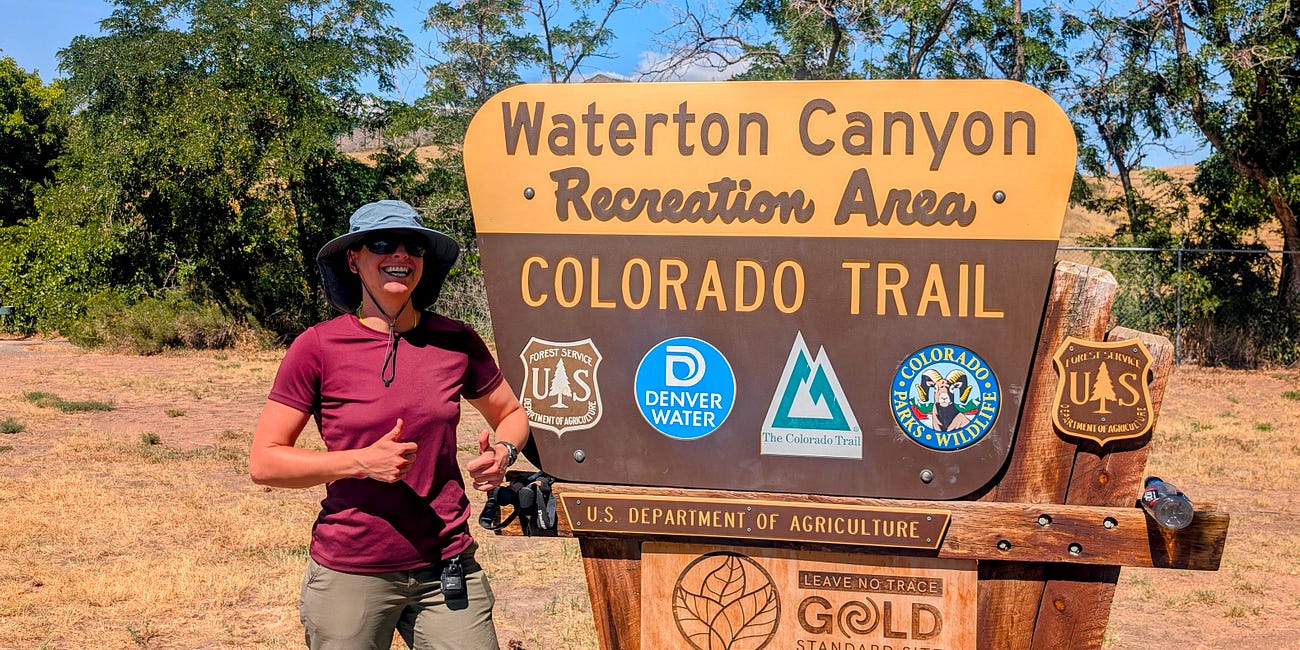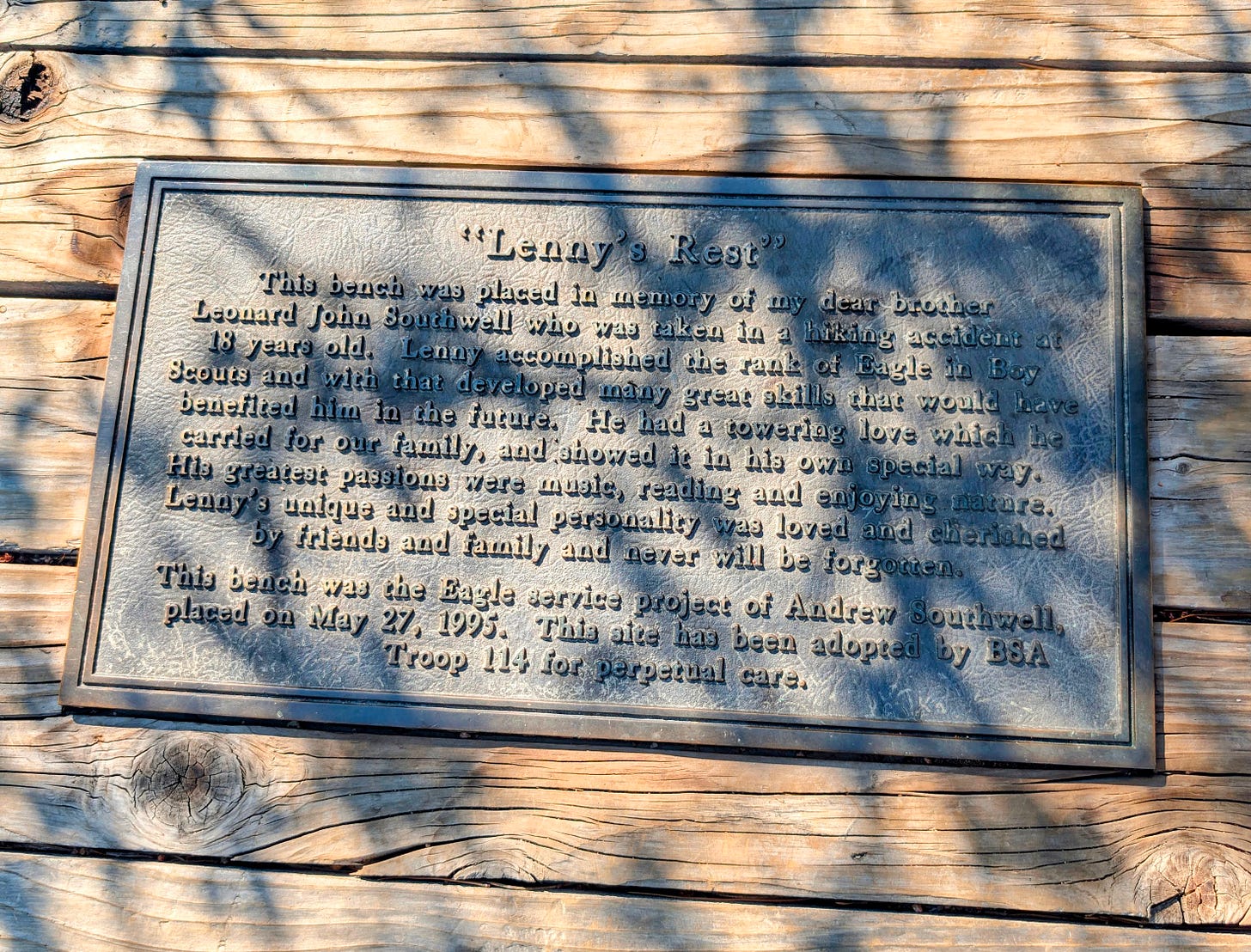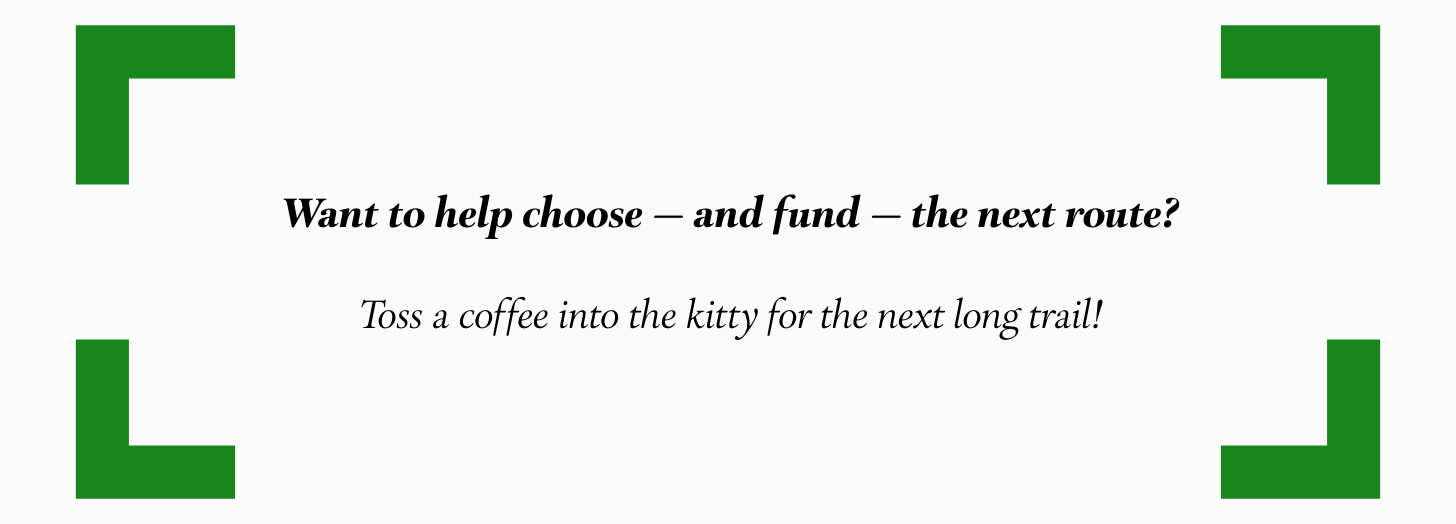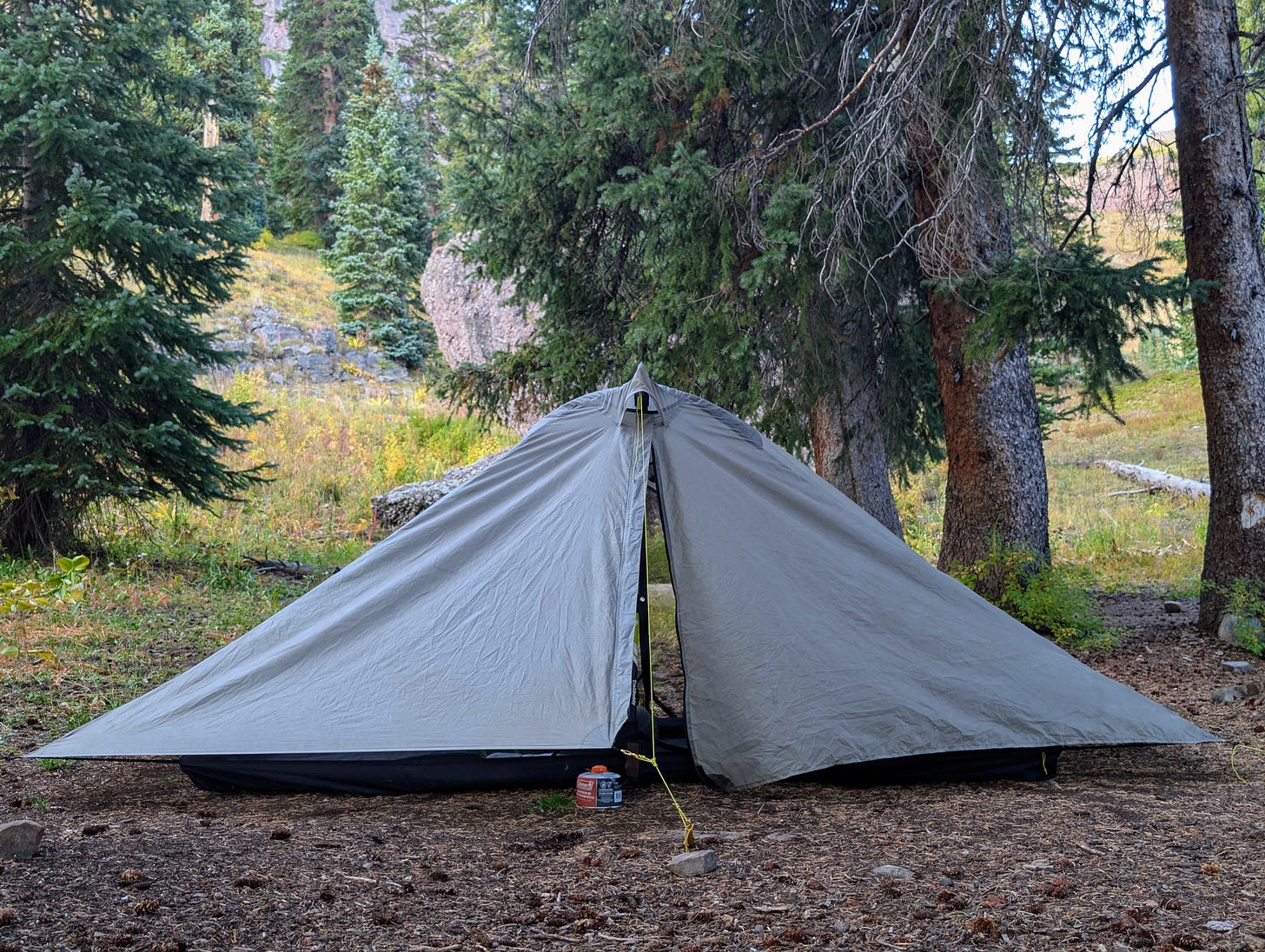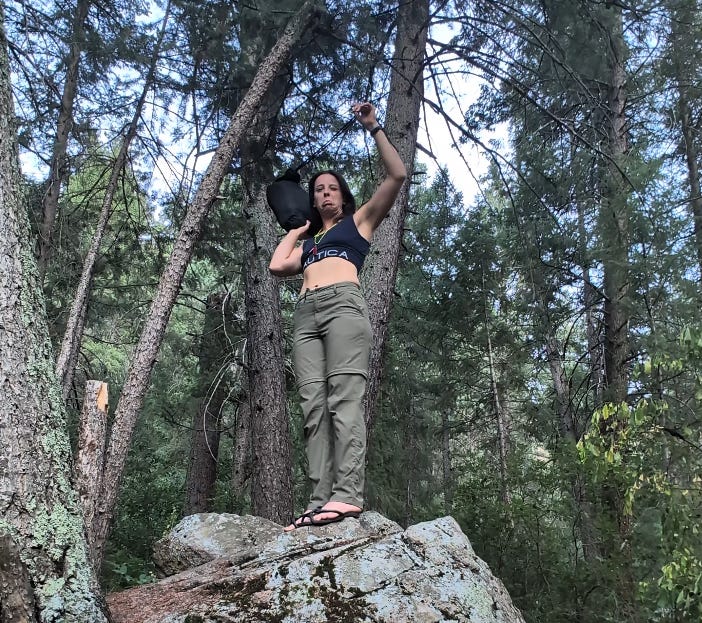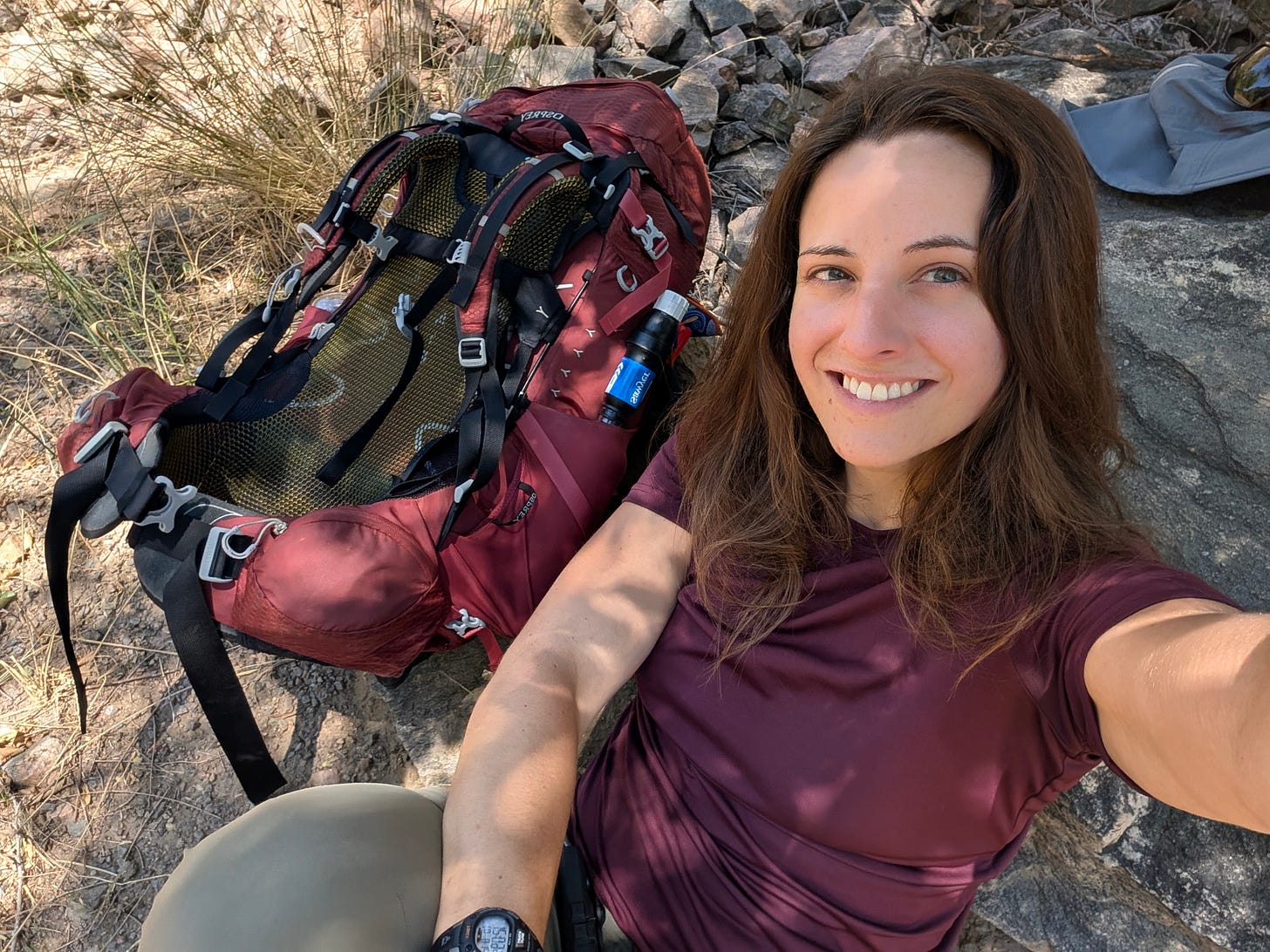Segment 1.5: CT Mentors, Big Ramhorns, & A Literal Meltdown
2025 SoBo Colorado Trail Report ft. the ram standoff, Lenny’s Rest, meeting M&M, camp-spot etiquette, first pitch, cooking fiasco, Ursack mini-guide, and a lights-out reflection.
[ Day #: 1 | Total Miles Hiked: 6 | Miles Remaining: 485 ]
If you didn’t catch the most recent update, this is where we started:
Segment 1: A Clean Break & The CT's Canyon On-Ramp
[ Day #: 1 | Total Miles Hiked: 0 | Miles Remaining: 491 ]
At around 3 p.m., I stop on the side of the trail to drink some water, eat a snack, and record a quick video. I’m already struggling; it’s beyond sunny, dry, and the elevation has given way. After only 2 1/2 hours and 6 miles, it feels really nice to sit. About five minutes into my break, however, a full-grown male Rocky Mountain Bighorn sheep turns the corner, following the trail. He stops when he sees me, and we both engage in an impromptu staring contest, sizing one another up. Shockingly, the average bighorn sheep weighs just as much as I do — about 150 lbs.
I whip out my phone and take a video, paralyzed with awe. His horns are huge. They’re technically called horn cores, which are inner bony extensions of the skull covered by an outer sheath made of keratin. Unlike antlers, bighorn sheep horns are not shed; they grow continuously throughout the animal’s life, forming rings that can be used to estimate age. The horn and horncore are adapted to absorb impact energy and reduce stress on the brain cavity during high-speed ramming, a behavior rams use for fighting over territory and mates.
As I ponder this fact, the ram starts moving towards me, and I am no longer in awe. I start stumbling back, desperately thinking back to the sign I half-read about what to do if you come across a bighorn sheep, posted up about 2.5 miles back. From what I had read, it instructed guests to back away and speak in a calm, clear voice.
“Hey, big Ramhorn sheep… Heyyyyyy big Ramhorn… Ayyye, go on big Ramhorn, go on…” For the record, I have no idea what a “Ramhorn” is. I don’t think they exist, after a Google search. There is, however, a diner called the “Ram’s Horn” in downriver Michigan that I grew up on and may have been momentarily recollecting as a subconscious form of comfort during these uncertain times.
It turns out, the “big Ramhorn sheep” is just trying to get away from me, a crazy woman who clearly does not know trail etiquette yet. As he trots down the dirt path and away from me, I collect my dignity and other belongings from the ground and head back up the steady climb, giggling at myself for being so struck with fear by a sheep.
Later on, I find refuge at Lenny’s Rest.
Still a bit on edge, I distract myself with large portions of beef jerky, granola, and trail mix while skimming through FarOut comments.
FarOut, for those who aren’t familiar, is an offline GPS app with trail maps, topo and elevation profiles, waypoints for water/campsites/junctions, and a living margin of crowd-sourced notes. In practice, some of the features are a little buggy (like the mile markers on FarOut not aligning with mileage indicated on the CTF’s official Colorado Trail databook), but despite a few quirks, it still remains one of the leading electronic resources thru-hikers use on the CT & CDT alike.
Some comments are more helpful than others. Ones that point out wild animals, in their natural habitat, doing their normal thing, are generally considered unhelpful and will be “downvoted”. Then there are comments like these:
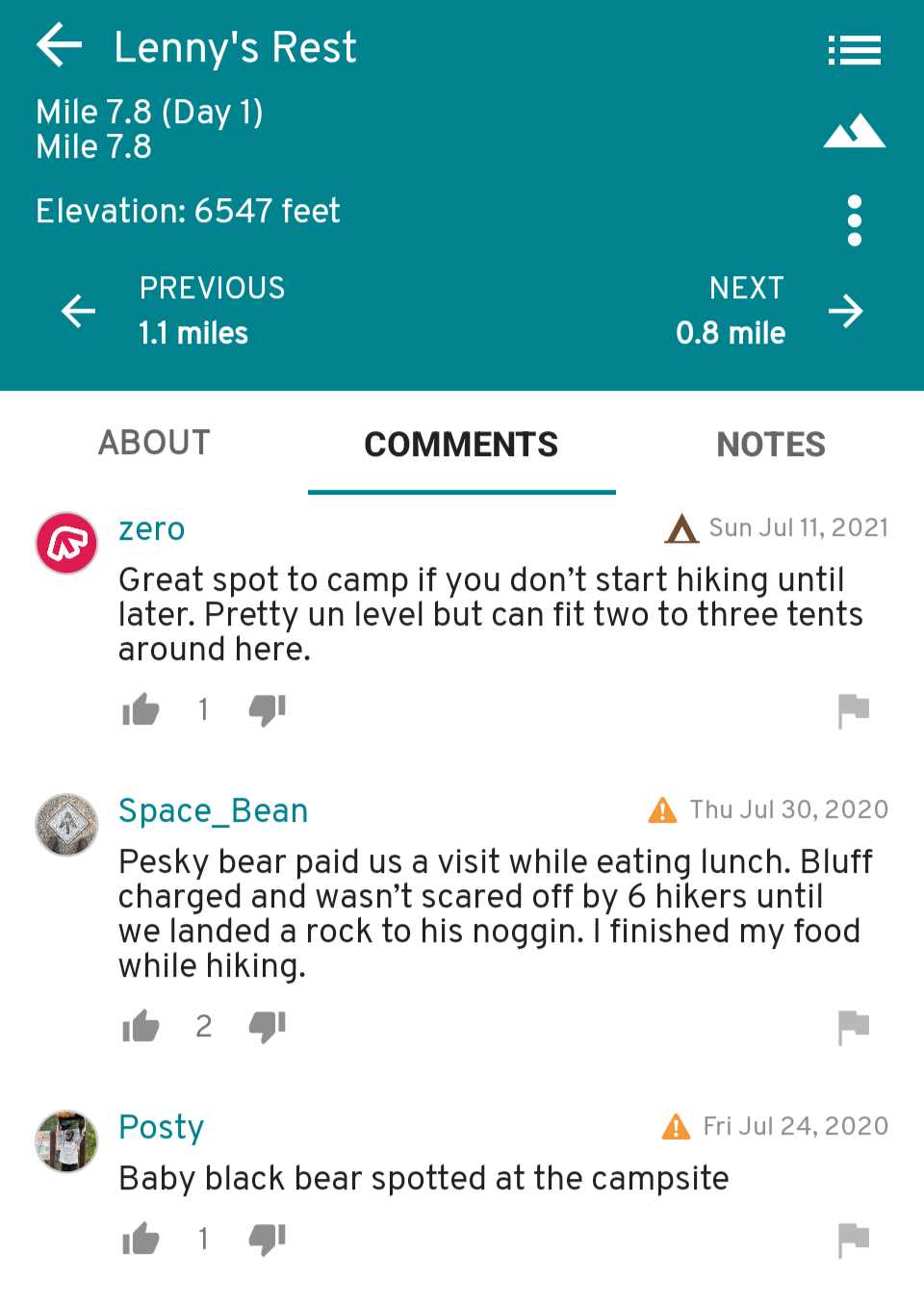
I glance around from the log I’m on, a few yards behind Lenny’s bench, fully expecting a full-sized black bear to round the brush and make a move for my beef jerky. After much deliberation, I had decided not to bring bear spray with me (only a knife), and now I was beginning to reconsider. I thumbed the Spyderco in my waistband, a 7” sailing knife I’d snagged right before leaving Tampa. It was meant for saltwater exposure, slicing line, food prep, and now camp chores, but I had been practicing how to use it for other things, too. Nevertheless, I cling to the hope that its utility will never breach that of cutting cord and apple slices, because I don’t think I’m mentally prepared for anything outside of that.
Another hiker pops into view from the trail, his trekking poles dancing across the rocky, root-laced singletrack. “Did you see that bighorn on trail?” he asks me, adjusting a pair of wire-framed glasses back toward the bridge of his nose.
“I did!” I exclaim. “It was huge.”
“Yeah. We kind of just stared each other down for a while. Then I tapped my trekking poles on the granite—” he drives the tips down with a dense thud— “and that was enough to send him trotting off. Honestly, it was the jolt of adrenaline I needed to keep moving.”
I nod, and he walks on, fortified by his eclipse with nature. With my snacks zipped back up in their smell-proof containers and nestled inside a Ursack, I head southwest on the trail once more. About .2 miles north, I see my very first tent on the trail, a burnt orange Big Agnes poking out from behind the brush. I manage another two miles or so before I’m forced to stop and refill my water bottles at Bear Creek, the last reliable water source for 7.8 miles.
A very fit, white-bearded man in a turquoise Melanzana hoodie is submerging a 3-liter water bladder in the creek. We greet each other, and he introduces himself as “M&M” while I pull out my SmartWater bottles (did you know Essentia and Lifewtr bottles work, too?). One is a 1.5 liter, while the other 1-liter bottle has a Sawyer Squeeze filter attached to the cap. It’s the only water filtration system I technically know how to use; Arlo showed me during an overnight hike of McAfee Knob in Virginia (on the A.T.) just a couple years ago.
As we filter, we talk a bit about M&M’s experiences on other long trails. Both triple crowners, he and his wife started thru-hiking in their late 50’s, and have been hooked for well over a decade. M&M’s trail name doubles as a pseudonym for the thru-hiking husband/wife duo, since both their names start with the letter M. M&M’s wife, a since retired, well-known Pilates instructor and personal trainer — who reportedly had a cult following back in the 80’s — coaxed him into the PCT first, and only two weeks in, he told me that they had serious doubts about whether or not they could finish the 2,650 mile trail. Even their blisters had blisters, and a couple of toenails were beginning to blacken and fall off. That year, trail closures from wildfires forced detours that added miles and decreased morale. They pushed through heat waves in California, smoke in Oregon, and snow that lingered deep into Washington. By the time they tagged the northern terminus, however, the struggle had hardened into something else — obsession, maybe, or just the realization that they weren’t done yet.
I share some personal doubts with M&M. It’s my first day of hiking the trail, and while I had gotten a later start, I am already thinking of setting up camp at mile 8.7. It will be getting dark soon, and even though it’s only 6 p.m., I want to cook dinner and record some more videos. Surprisingly, M&M agrees with my plan, despite the fact that he is planning on hiking anywhere between 10-16 more miles that evening.
“You’re doing it the right way. Start low and slow… just build your way up to those 20-mile days. Though I’ve come to really enjoy night hiking, you know. It’s pretty exciting.” He clips the Platypus bladder to a bit of cord and flings it up over a pine limb. The plastic sack swings there, sloshing in the last of the daylight, before he clips a hose to it and lets gravity do the work.
“Yeah… So, do you think it’s rude to go camp near those people we saw coming into the creek? Or what would you do? Hike on, find an area with campsites that hasn’t got anyone there yet?” I’m hesitant to encroach on another camper’s elected territory for the night. I haven’t quite figured out the etiquette for that yet, or just how many campsites there are on the Colorado Trail, or furthermore, how many people would be camped at them.
“Oh, sure you can camp by them. I’d ask first, and if they act weird about it, you know… But also, this is public land! They can’t tell you where and when to camp. Just be respectful of their space. And it’s always a kind gesture to ask.” I nod in agreement, and once we say our goodbyes, head back over to where I first saw the tent.
The Woodland Social Contract
The trail guide has this marked off as an area with multiple sites, but as I scan the forest floor, I notice maybe one or two other viable ones. The flattest site opens up in a quiet pocket of trees beneath a towering Ponderosa pine, light falling through the needles like stained glass. Below this, a fallen log rests across the duff, framing a patch of level ground with just enough space for a tent.
“Hey…” I start awkwardly, until I hear a bit of rustling from within the other tent’s vestibule. “Do you mind if I camp over here, kind of by you guys?”
A frank-looking man with a well-manicured black beard emerges, his expression straightforward yet kind. “We don’t have a problem with that at all. I looked at the other campsites here and that one seems to be the best out of all the other options. Good ground for staking, sufficient drainage, only slightly sloped.” I thank him and set down my pack, preparing for the first pitch of the trail.
The tent I packed for this trip is a Six Moon Designs Lunar Duo, a roomy, two-person UL shelter that weighs in at just under three pounds. It’s a single-walled trekking pole tent with wide side vestibules for gear and just enough headroom to sit up without brushing the ceiling (under ideal conditions, that is). In the 5 minutes it takes to set up, my stomach grumbles a sum total of 15 times. After the last guy line is tensioned, I rummage through the contents of my pack for my stove kit and food. Tonight I want to make one of the BeanVivo Three Bean Chilis that’s been weighing down my Ursack at 283g each.
I’ll be honest. Up until very recently, I’ve been a little intimidated by the idea of carrying around (and using) a pressurized metal canister of fuel. My anxious brain thinks of all types of unnecessary concerns: what if it gets shaken up and explodes next time I use it? What if something punctures it from inside of my pack? What if… you get the picture. But I’ve done more than a handful of shakedown hikes by now, and I feel like I’m really starting to get to know my gear. I attach the PocketRocket stove head to the IsoPro fuel tank and light the burner with a tiny Bic before carefully balancing the lightweight aluminum pot on top. Satisfied with my work, I lean back and begin skimming the ingredients list on the back of the BeanVivo bag.
My leisurely reading is interrupted by a few rapid-fire popping sounds, followed by a spark of orange where there definitely shouldn’t be one. In my infinite wisdom, I’d managed to leave the polypropylene nesting bowl directly on the outside of the pot, right above the flame. Within seconds it is sagging, dripping, and then fusing itself like molten candle wax onto the stove head. By the time I realize what is happening, the whole thing has hardened into a gummy plastic collar around the threads of the burner. It takes the better part of an hour to chip, scrape, and curse it free.
Famished and mildly horrified, I boil my water anyway, the stove now wheezing out what I can only assume are toxic plastic fumes. Obviously not recommended. But if nothing else, it makes me laugh — I really am pretty green out here, and also allowing myself an ample amount of grace, because it’s Day 1.
I will learn, I tell myself, feeling the mantra begin to form around the jagged edges of my own inexperience. Everyone has to start somewhere.
Pro Tips for Hanging an Ursack
Once the instant brown rice and beans have been added, I end up having a delightful dinner, and have just enough energy leftover to embark on my very first bear hang. With an Ursack, you don’t need to pull of the full Boy Scout routine of a perfect counterbalance hang, but you do want to do it right:
Use the figure-eight knot to cinch it tight; slack is a bear’s best friend.
Tie to a sturdy trunk or limb about 6+ feet off the ground.
Keep it a few feet away from the trunk so it’s not just a chew toy on display.
Stash at least 200 feet from camp, cooking area, and water sources.
Remember: the Ursack is claw- and bite-resistant, not smell-proof. Even smell-proof aren’t 100% (seals wear out, micro-tears happen, and strong odors can still leak), though they are better than a regular Ziplock.
My first bear hang attempt is pretty ridiculous, and unfortunately, I do have it on video. It is surprisingly difficult to have those little black cords do what you want around a tree limb, especially when that limb is directly above you and shedding bark and other debris into your open eyeballs.
Ultimately, though, I do manage to make it work, and feel somewhat accomplished by the end of the evening. There are still so many “firsts” to get through on this trail, and everything still feels so novel. Yesterday, I was sleeping in a bunk bed, and tonight I’m (kind of) alone in the woods, holed up and cozy in my half-drawn leaning tent with the tent flaps pinned up so that every time I open my eyes I can stare at the gigantic Ponderosa pine nearby. I feel a sudden pang of sadness for all the people (men and women) who had recently shared with me that this very thing I was doing, was one of their greatest fears… How could that be? There must be some sort of mix-up; this has got to be one of the most relaxing things on earth, falling asleep to the sound of leaves rustling with the wind and Bear Creek running steadily in the distance.
The canyon road miles already feel like a dream, the chatter of day hikers and the crush of gravel replaced by the hush of forest. The air is sharp with pine, resin-heavy, and cool against my skin. I wonder if those same people who told me they’d be terrified to spend a night alone out here have ever slowed down long enough to realize the woods aren’t plotting against them. Such a fear is imagined, and as primal as it gets; the peace, however, is real.
The forest doesn’t demand courage, only respect. And tucked away beneath the sway of a Ponderosa near Bear Creek, I feel the trail’s official welcome — not as a challenge, but as a quiet invitation to belong.
Ahead: Battling the past on South Platte, crazy nightmares, & the sky shopping for a new tent…
I’m actively seeking aligned sponsors (outdoor, LNT education, safety, trail orgs).
Warm intros always welcome! Socials: @freda.heights on IG/TikTok for the “big Ramhorn” video, my first bear “hang”, and more on-trail antics.
***NOTICE*** Site move: Bookmark typetwofun.com—the new hub is coming. (:

